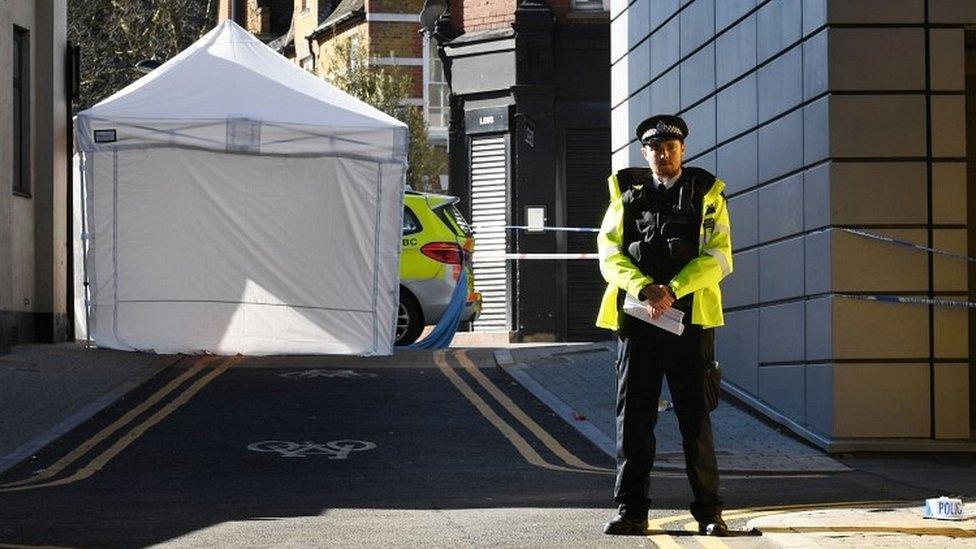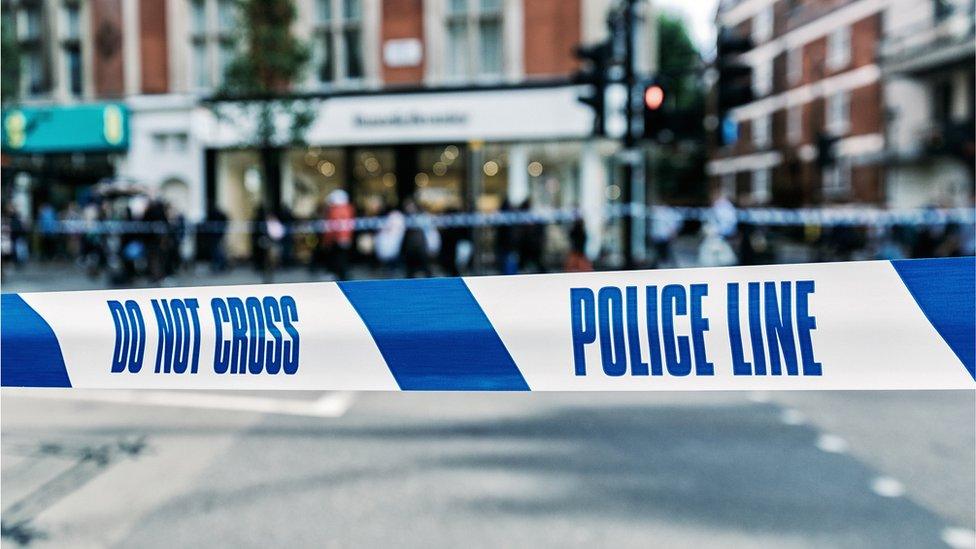Reality Check: Is violence increasing exponentially?
- Published

The claim: Violence is rising exponentially.
Reality Check verdict: Assuming he just means it's rising fast, he is right according to the police recorded crime figures but there is not yet any sign of such an increase in the Crime Survey for England and Wales.
Che Donald, vice-chairman of the Police Federation of England and Wales, the body representing police officers, was on BBC Radio 4 on Friday talking about violence, which he said was "increasing exponentially".
Now, it's unlikely he meant that in its strict mathematical sense because if violence were increasing exponentially, it would mean everybody in England and Wales would be a victim by about 2040.
We assume he is referring to England and Wales because that is the area his organisation covers.
To find out how much it has actually been increasing we can look at two sources, each of which has benefits and drawbacks. They are the Crime Survey for England and Wales, external and crime recorded by police.
The Crime Survey is a good measure of crime experienced by individuals because it is not affected by changes to how crime is recorded and is better at collecting crimes that have historically been under-reported to the police.
However, it has some limitations, especially with unusual crimes because the sample taken by the survey may not include anybody who has been a victim. Also, the survey does not include homicide because it would not be possible to interview the victims.
There is a time-lag in the survey, so the figures are older than police figures. This means the survey is better for looking at long-term trends than spotting emerging ones.
The most recent figures for police recorded crime, external are for the year ending September 2017, when violence reached 1.3 million cases - an increase of 20% on the previous year. (The chart below uses figures for the year to the end of March because those are available going further back.)
This followed more than a decade of reductions in violent crime, which reached its lowest point in the year ending March 2013 when there were 601,141 police recorded cases of violence.
Using these statistics, the amount of violent crime appears to have doubled in just over four years.

Those figures are affected by changes in recording practices and police activity and they can't capture violent crimes that don't get reported.
The Crime Survey for England and Wales is not affected by these factors - it suggested there had been a year-on-year reduction in violent crime, decreasing from 1.9 million incidences of violence in the year ending March 2011 to 1.2 million in the same period of 2017.
This is far below the peak recorded by the survey, which saw 3.8 million incidents in 1995.

However, the Office for National Statistics concedes that for low-volume, but high-harm offences, such as homicide and knife crime, police statistics might offer a better picture of what is going on.
Equally, the crime survey operates on a time-lag, so if there is an exponential increase in violent crime, police statistics are better suited for spotting this emerging trend.



- Published6 April 2018

- Published25 January 2018

- Published24 January 2019
